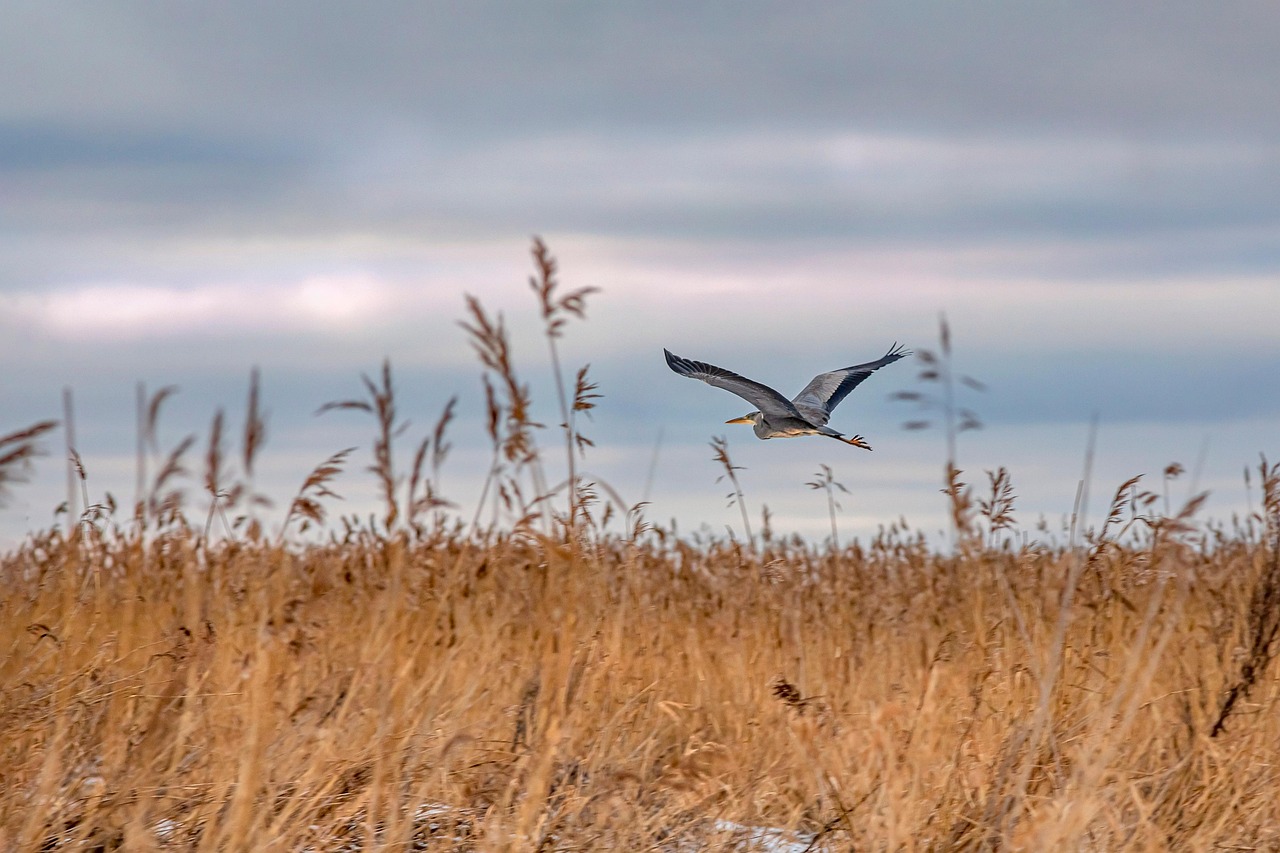Grey Heron (Ardea cinerea)
The Grey Heron is a large wading bird commonly found across Europe, Asia, and Africa. It is known for its tall stature, long legs, and dagger-like bill, making it a skilled hunter of fish and small aquatic animals. Often seen near rivers, lakes, wetlands, and coastal areas, this elegant bird is a patient predator, standing motionless before striking with lightning-fast precision.
Physical Description
- Size: 90–100 cm (35–39 inches)
- Wingspan: 175–195 cm (69–77 inches)
- Weight: 1–2 kg (2.2–4.4 lbs)
- Plumage:
- Grey upperparts with a white head and neck.
- Black stripe running from the eye to the back of the head, forming a crest.
- Long yellow bill, which turns orange in the breeding season.
- Dark grey flight feathers with a graceful, slow wingbeat.
Habitat & Distribution
- Found in Europe, Africa, and Asia, from temperate regions to the tropics.
- Prefers wetland habitats, such as:
- Rivers, lakes, and ponds
- Estuaries and coastal shores
- Marshes and rice fields
- Often seen standing in shallow water, waiting to catch prey.
Diet & Hunting Behavior
- Carnivorous: Feeds primarily on fish, but also eats:
- Amphibians (frogs, newts)
- Small mammals (rodents)
- Insects and crustaceans
- Occasionally small birds
- Hunting Strategy:
- Stands still or wades slowly in the water, waiting for prey.
- Strikes with a fast and precise stab of its sharp bill.
- Swallows prey whole.
Breeding & Nesting
- Breeding Season: February–June, depending on location.
- Nesting Sites:
- Builds large stick nests in tall trees, forming colonies (heronries).
- Eggs:
- 3–5 pale blue eggs laid per clutch.
- Incubation:
- Around 25–28 days, shared by both parents.
- Fledging:
- Chicks leave the nest after 7–8 weeks but remain dependent for a while.
Behavior & Adaptations
- Solitary hunter, but breeds in colonies.
- Flies with slow, deep wingbeats, holding its neck in an S-shape (unlike storks and cranes, which extend their necks).
- Can be seen standing motionless for long periods while hunting.
Threats & Conservation
- Threats:
- Habitat loss (wetland drainage and pollution).
- Overfishing reducing food availability.
- Disturbance from human activity.
- Conservation Status:
- Listed as Least Concern (LC) on the IUCN Red List.
- Populations are stable or even increasing in many areas due to wetland protection efforts.
Interesting Facts
- Grey Herons can live up to 25 years in the wild.
- Unlike some birds, they do not have waterproof feathers, so they must dry their wings after fishing.
- Despite their large size, they are lightweight and efficient fliers, traveling long distances in search of food.
Summary
The Grey Heron (Ardea cinerea) is a large, elegant waterbird with grey and white plumage, a long neck, and a sharp bill. Found across Europe, Asia, and Africa, it thrives in wetlands, lakes, and rivers, where it hunts fish and small animals with great precision. With its slow, graceful flight and patient hunting style, the Grey Heron is a fascinating and well-adapted predator of aquatic environments.
Views: 288
Subscribe to the newsletter:
